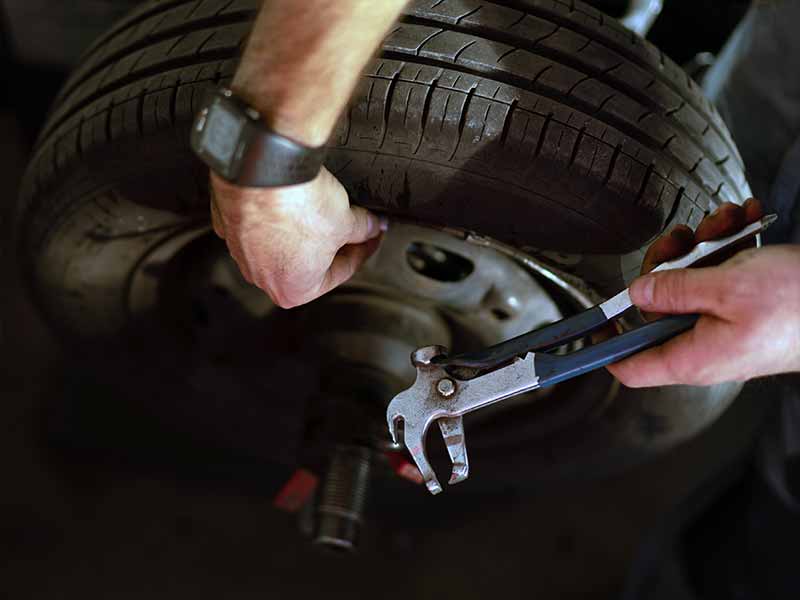If you’ve recently heard about tire balancing beads and were curious why they aren’t as popular as traditional weights for wheel balancing, we’re here to give you the answer.
Balancing Beads Vs Weights
Tire balancing beads are tiny, round beads made of ceramic or glass that are added to the tire through the valve stem. Weights are metal weights attached to out-of-balance points around the wheel to balance it.
Wheel weights work well on almost all passenger cars and trucks, while tire balance beads can only fix smaller imbalances and don’t perform well with low-profile tires.
In this article, we will compare the pros and cons of each method and help you decide which is the right choice for you.
Let’s take a closer look.
No products found.How Do Balancing Beads Work?
Balancing beads are small granules typically made of glass, ceramic, or metal. They are designed to be inserted into the tire through the valve stem, where they move around inside the tire as it rotates. The beads work by automatically adjusting their position based on the tire’s balance, distributing their weight to the heavy spots on the wheel, and compensating for any imbalances. This helps make sure the tire rolls smoothly and minimizes any vibrations that can cause discomfort or wear on the vehicle.
One of the benefits of balancing beads is that they can be used on a wide range of tires, including those on passenger cars, trucks, motorcycles, and even heavy machinery. They are handy in situations where traditional wheel weights cannot be used, such as on wheels with no lip or on those with limited space for weights.
Another advantage of balancing beads is that they are not affected by weather conditions and can last the entire life of the tire. Unlike traditional wheel weights, which can corrode or fall off over time, balancing beads remain in place and continue to function correctly.
However, it’s important to note that balancing beads may not be suitable for all situations. For example, they may not work as well on tires with very large imbalances or those that require precise balancing for high-speed performance. In such cases, traditional wheel weights may be a better choice. It’s also important to make sure the correct amount of balancing beads is used, as too few or too many can affect their effectiveness.
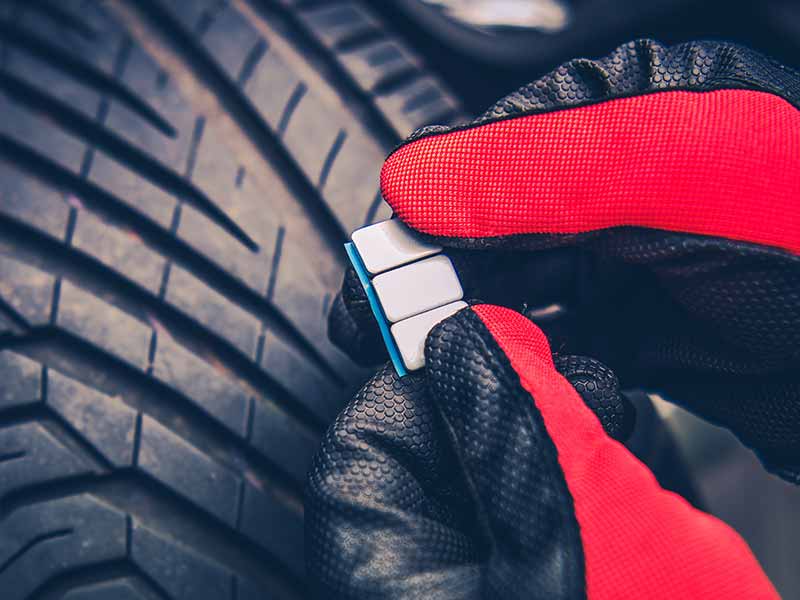
How Well Do Balancing Beads Work?
Balancing beads work best for larger tires, such as those on trucks and RVs. This is because larger tires are more susceptible to imbalances, which can cause a rough ride and damage the vehicle’s suspension components over time.
They don’t work as well with smaller tires or tires with particularly large imbalances. If this is your situation, traditional wheel weights will be a better choice.
Why Aren’t Balancing Beads As Commonly Used As Wheel Weights?
Balancing beads are not as common for several reasons. First, wheel weights have been around for a long time and are a well-established method for balancing tires. Many tire shops and mechanics are familiar with using wheel weights and may not be as comfortable with the idea of switching to balancing beads.
Second, balancing beads don’t work as well in all situations. They are suitable for balancing most tires, but there are situations where they don’t provide the necessary balance. For example, tires that are too far out of balance or low-profile tires.
Third, some people may be concerned about the durability of balancing beads. While they are designed to withstand the normal wear and tear of driving, there is a possibility that they could break down over time and become less effective.
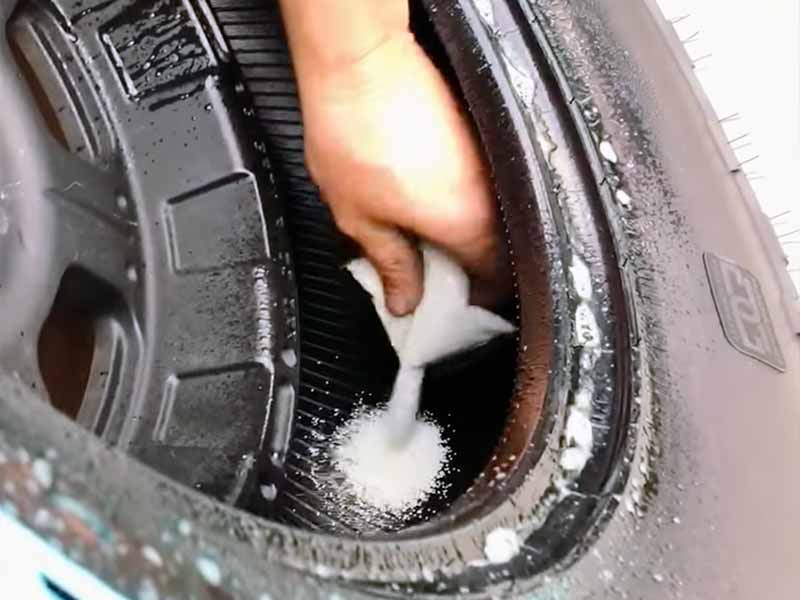
How To Use Balancing Beads
Balancing beads are an easy and convenient way to balance your tires, and they can be used in passenger cars and trucks.
Here’s an overview of how you can use them:
- Determine the correct amount of balancing beads needed: The amount of balancing beads required depends on the size and weight of your tire. Refer to the manufacturer’s guidelines or consult a tire expert to determine the right amount.
- Prepare the tire: Before adding balancing beads, make sure your tire is clean and dry. Remove the valve core and any existing wheel weights from the rim.
- Pour the balancing beads: Pour the correct amount of balancing beads into the tire. You can use a funnel or a special dispenser tool to make the process easier. Make sure to pour the beads slowly and evenly around the tire.
- Inflate the tire: Reinstall the valve core and inflate the tire to the recommended pressure. Make sure the tire is seated correctly on the rim.
- Check the balance: Take your vehicle for a test drive to check the tire balance. If the steering wheel vibrates or the vehicle pulls to one side, it may indicate that more balancing beads are needed. If the ride is smooth, then you’re good to go!
How Long Does It Take For Balancing Beads To Work?
As soon as the beads are distributed evenly throughout the tire, they begin to balance the tire by counteracting any imbalance.
Unlike traditional wheel weights that require time-consuming adjustments, balancing beads work quickly and easily. Once they are added to the tire, they will begin to distribute themselves automatically as the tire rotates. In some cases, it may take a few miles for the beads to thoroughly distribute and achieve optimal balance, but this process typically takes only a short amount of time.
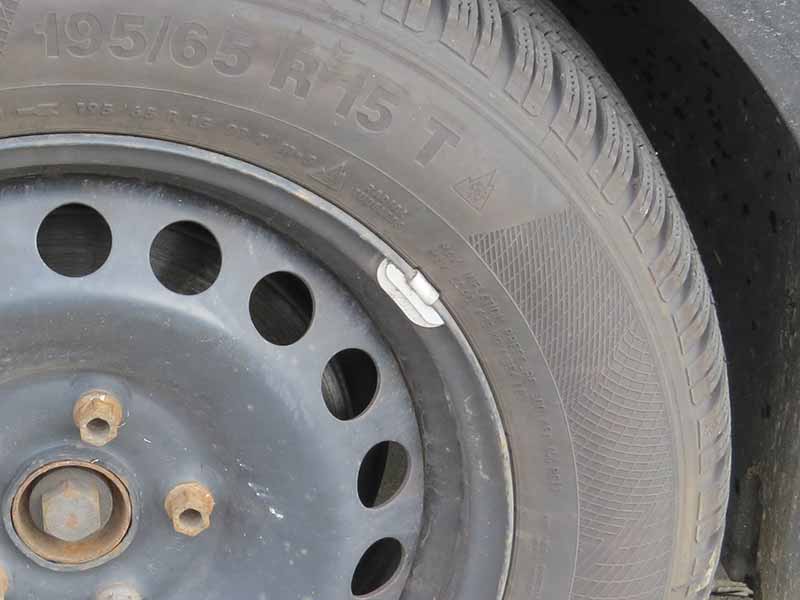
Can You Use Balance Beads And Weights?
Using both balancing beads and weights on your tires is not recommended. This is because the beads and weights can interfere with each other and create an imbalance in your wheels. This can lead to a rough ride, uneven tire wear, and even damage to your vehicle.
When balancing your tires, you have to choose one method or the other. You will not need any weights if you decide to use balancing beads. The beads will distribute themselves evenly around the inside of the tire and adjust themselves as necessary as you drive. If you use weights, the mechanic will attach them to the rim in specific locations to balance the wheel.
Trying to use both balancing beads and weights at the same time can be a recipe for disaster. The beads can clump together around the weights, causing the tire to become unbalanced. This can lead to dangerous driving conditions and potentially cause an accident.
Do Balancing Beads Work At Highway Speeds?
Balancing beads are designed to work at all speeds, including highway speeds. The higher speeds actually help to distribute the beads more evenly throughout the tire, which can result in even better balance.
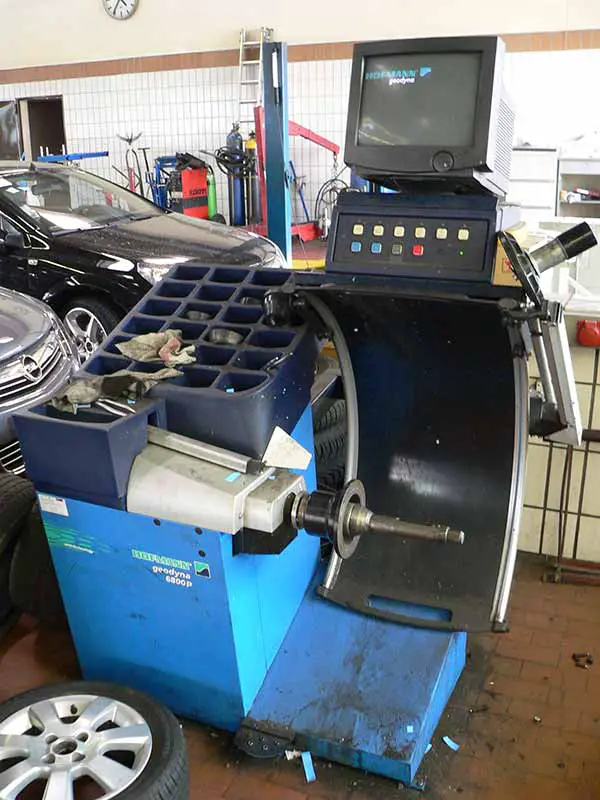
Can You Put Too Many Balancing Beads In A Tire?
If you use too many balancing beads, they can clump together and cause an imbalance in the tire. This can result in vibrations, poor handling, and even damage to the tire or wheel.
So, how do you know how many balancing beads to use? It depends on the size and type of tire you have. Each manufacturer will have their own recommendations for how many balancing beads to use for each tire size. Typically, you’ll need about 1-2 ounces of balancing beads per inch of tire width.
How To Remove Balancing Beads
If you have balancing beads in your tires and need to remove them, there are a few different methods you can use. One way is to simply deflate the tire and remove the valve stem core to allow the beads to pour out. As you can imagine, this method can be messy and time-consuming, and getting all the beads out is not easy.
Another option is to use a specialized tool called a “bead bazooka” that injects compressed air into the tire, causing the beads to fly out. This method can be quick and effective, but it requires a bit of skill and can be dangerous if not done correctly.
A last option is to take the tire to a professional tire shop or mechanic who can remove the beads using a tire machine. This method is the most reliable and efficient but can also be more expensive.
Regardless of the method you choose, it’s important to make sure that all of the balancing beads are entirely removed and that you have your tires properly rebalanced.
Resources
Below are some links you may find helpful when learning about tires
- What is the best balancing method? – Counteract Balancing Beads
- Why shouldn’t Counteract Balancing Beads be used in automotive applications? – Vehicle Service Pros
Final Thoughts
The debate between balancing beads and weights ultimately comes down to personal preference and your vehicle’s specific needs. Both methods have pros and cons, and it’s up to you to decide which is best for you.
Balancing beads are a convenient and cost-effective solution that can offer a smoother ride and longer tire life, but they may not be suitable for all types of vehicles and road conditions.
Wheel weights are a time-tested method that can provide reliable balancing for a wider variety of vehicles, wheels, and tires, but they may require more maintenance and be less convenient to install.
Good luck and happy motoring.
